UPDATE: It turns out, this is not the place I thought it was. It is actually the remains of an old Penal Camp. I’ll let the story stand ‘as is’ since it mostly covers the grounds and what we found there. A complete rewrite is not practical. As always, If I’m wrong, I want to know about it. Sorry for the delay in passing on this info. Seems I still need to visit Henry Barracks. More details in a comment at the bottom. Thanks, Joseph.
A pal of mine recently told me about a set of ruins up in the mountains near Cayey. After a bit of planning we met in Cayey and headed off to check it out.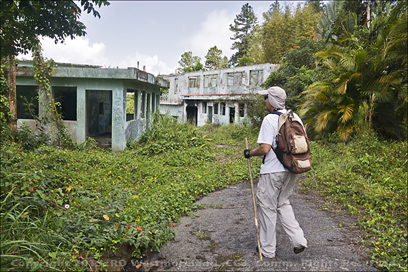
As it turns out, this old US Army fort has a long and colorful history.
The ruins are located on Highway 184. Coming from San Juan, it’s the Guavate Exit, which is the first exit before Cayey, off Expressway 52. After you exit, head under the Expressway going left, into the mountains. It’s a typical Puerto Rican mountain road so you will not be doing 60mph, but the views are stunning so why push it. I took a lot of photos along the way.
The actual coordinates are- 18º06’49.63”N, 66º03’49.82”W.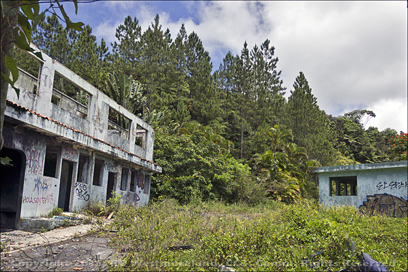
We had a perfect day… the weather was mostly clear with a nice breeze. After a couple of false turns, we found ourselves at what looked like the main entrance. The sign at the main gate was gone, but you could still see where it once stood.
On the Grounds..
It would be an understatement to say that the overgrowth had taken over the place. If it were not for the massive size of most of the buildings, many of which are 2 stories, you would probably drive right on by.
There are no signs to speak of, very few references as to what this facility had been used for in the past. Later, after I got home, I did a bunch of research online and discovered a little history. More about that in a bit.
The entrance was badly overgrown as is the rest of the place.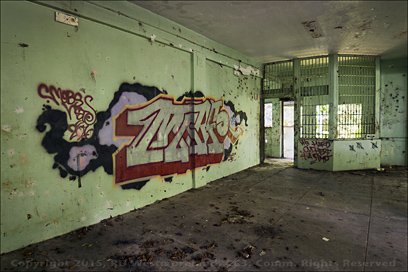
At the entrance, the remains of a burned up car littered the ground, but the car was gone. There are at least 8 large buildings spread over several acres. We visited about half of them. In another 2 or 3 years, you will hardly be able to get around. All of the concrete buildings are still standing, but the roofs on several have collapsed or were removed by scavengers. Most of the metal has already been stripped from the place. The rest is showing a lot of rust.
The place really felt like you were on the set of “LOST”. Which gives me a few ideas for return visits.
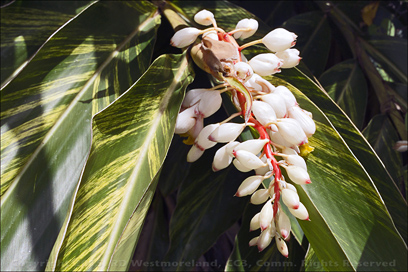 If it were cleaned up some, this place would be perfect for a paintball tournament. No. I’m not suggesting you round up a bunch of friends and go there to do that. Did I mention it’s an abandoned facility with broken glass, sharp rusty metal and things hiding under the overgrowth you cannot see? It is truly not safe if you do not take certain precautions. And even then, you are on your own. I have no issue with checking out places like this, but I do not suggest anyone else do it.
If it were cleaned up some, this place would be perfect for a paintball tournament. No. I’m not suggesting you round up a bunch of friends and go there to do that. Did I mention it’s an abandoned facility with broken glass, sharp rusty metal and things hiding under the overgrowth you cannot see? It is truly not safe if you do not take certain precautions. And even then, you are on your own. I have no issue with checking out places like this, but I do not suggest anyone else do it.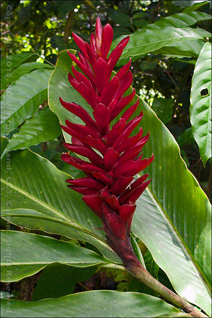
I always wear good boots, jeans and sometimes gloves, if I’m not sure what I’ll be running into. I keep knee pads in the car as well. If you show up to explore a place like this in shorts and flip-flops, you are begging to get hurt.
Had a Tetanus shot lately?
There is also the off chance you will run into a few dogs too. Most are simply abandoned pets, but once they are on their own, they can become quite unpredictable. It’s also why I always carry a monopod with me. My standard rig includes a monopod for those ‘low-light’ interiors or under the forest canopy shots. Most of the time, a tripod is overkill. I have one, but never use it except for long lens shots, which I hardly ever do. 90% of these shots were done with ‘wide-angle’ lenses. Besides, long lenses are heavy and I try to travel light.
The Garden
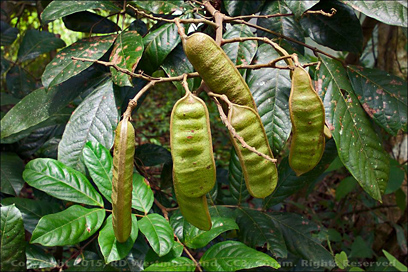 After moving through the first few buildings, we took a break and did lunch. I’m glad we brought some food and drink with us. It was pretty hot and muggy where we were. Dehydration can be an issue
After moving through the first few buildings, we took a break and did lunch. I’m glad we brought some food and drink with us. It was pretty hot and muggy where we were. Dehydration can be an issue
Everything was very lush and green.
After our short break, we came upon what looked like the remains of a formal garden. There were several kinds of Ornamental Ginger in huge patches. the Red Ginger is easy to propagate and very prolific. As the blossoms start to wither, they are replaced by baby shoots with their own roots.  A single blossom can have as many as 2 dozen sprouting shoots. Ginger will grow to 8 or 9 feet tall so as it dies and falls over, it will set new starts, well off the ‘mother’ plant. I scored just one blossom and got 22 starts from it.
A single blossom can have as many as 2 dozen sprouting shoots. Ginger will grow to 8 or 9 feet tall so as it dies and falls over, it will set new starts, well off the ‘mother’ plant. I scored just one blossom and got 22 starts from it.
Thing is, most Ginger likes lots of water.
There were other exotic plants and trees as well, but it was obvious people had been digging up some of it. My pal George (names were changed to protect the innocent), who had been here before was interested in a particular orchid, only to find it had already been taken.
The garden area still had concrete benches you could sit on, once the vines had been pulled back. It was a perfect place to take a break.
After the garden, we explored a couple more buildings. The remains of a garage or motor pool were pretty evident. There were dormitories, a huge gym split into two sections, and a dedicated kitchen or mess hall. My first impressions was that of a boys camp or military school, out in the middle of nowhere. Tall chain link fence with barbed wire could still be seen standing in places along the road. At the main entrance was a small formal building like a guard shack for checking in and out.
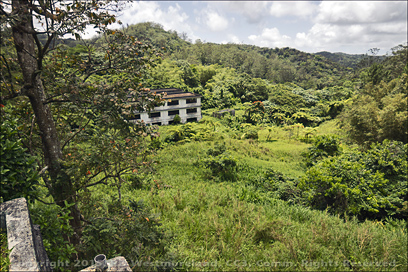 Further down the hill where we did not go, were a couple of 3 story buildings that resembled barracks. Next time, I will carry my folding Walkstool and extra water with me.
Further down the hill where we did not go, were a couple of 3 story buildings that resembled barracks. Next time, I will carry my folding Walkstool and extra water with me.
Historically Speaking
In 1898, immediately after the US won Puerto Rico in the Spanish American War, the Feds seized this Spanish facility for their own use. In 1908, it became the home of the 65th Infantry Regiment and was renamed Henry Barracks. It covered almost 440 acres of absolutely pristine mountain forests. Originally, there were 3 formal encampments. Hospital Hill was the Spanish group. The US Army and Navy both maintained training and communication facilities at Henry Barracks.
In 1928 hurricane San Felipe did extensive damage. Only part of the base was rebuilt. This time, in concrete.
Back then, the locals called soldiers from the mainland ‘Continentals’, not ‘Americanos’, which is what you hear today.
The base was formally closed in 1967, but most activity there was cut back, starting in 1953. At that point, most of the land was transferred to the University of Puerto Rico. It was repurposed and renamed, Un. of PR at Cayey with some of the other facilities being transferred to the City of Cayey. The town used it’s part as a recreational facility.
The National Guard retained a small parcel for the purpose of running drills and maintained a helicopter base for maintenance purposes. The University ROTC also made use of the training facilities as well.
The University of PR suspended all operations there in 1997.
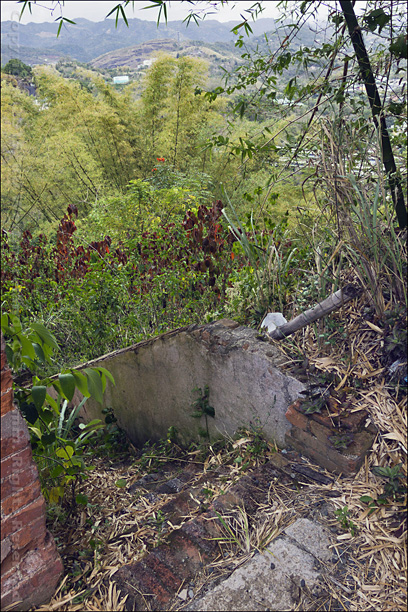 I did not see the monument mentioned in the Wikipedia story, but that does not mean it is not there. It’s a huge piece of property.
I did not see the monument mentioned in the Wikipedia story, but that does not mean it is not there. It’s a huge piece of property.
The old black and white photos were taken by me First Mate’s dad when he was stationed at Henry Barracks in about 1939-40.
It was not until we did the research that she discovered the location of this old military camp, where her father had trained, was located. What a fantastic coincidence!
He was quite the camera bug too.
All in all, we had a great day driving up, checking the place out and heading back down the mountain.
A few of the shots were taken from the drive itself.
Please remember, exploring places like this can be dangerous. Just ‘cause I did it, don’t mean you should. ARRG!

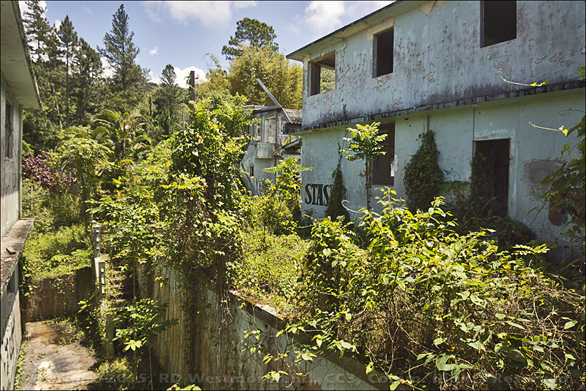



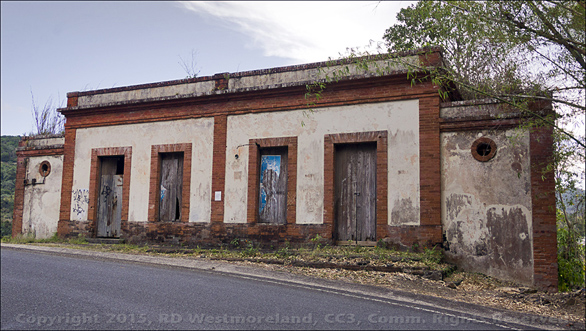
York Jacobs says
Estas estructuras son de “Campamento de Guavate”. Era un campamento corecional desde el 1946. Una busqueda por imagenes de Google podria ser de interes.
Joseph O. Prewitt says
Hi,
I read your article with interest. The photos that you have presented in this article are from the abandoned Penal Camp in Guavate, not of Henry Barracks in Cayey. The University of Puerto Rico-Cayey initiated operations in 1966 in the Northern Campus of Henry Barracks. It is today a vibrant institution, supporting the Island with its fine programs. In the southern campus you can find remodeled buildings and a trackw here the old Navy Towers used to be. The 65th Inf has a unit operating out of what used to be the old airport. All in all it is a beautiful sit, with new and old buildings, and a lot of memories. Don’t miss it next tiem you come to Cayey. S.Dog- I apologize for dragging my feet on this. I will add an update to the top of the post. I really do appreciate folks like you, who can provide me with corrections when needed. I’m NOT infallable. ARRG!!!!
Rick Jeffries says
Thanks for your website. Great info onPR that isn’t generally available. We are in Rincon part of the year and one of goals is to get to know the “real” island. We hope to be good stewards too and to treat the locals with the kindness and generosity they have showed us.
Rick
Brian Balaska says
Looks like a great time exploring, the building and plants. Glad to see your back posting. Has the rain from the tropical storms helped any with the garden. Keep up the great blog 7 more years until I can make the move finally. Brian
Ray says
Interesting article. Thanks. We live in Barrio Cubuy, Naguabo. In the rain forest up on 191. Americanos both of us. Living PR does have its challenges and beauty.
Linda Caycedo says
Arrg! Great blog… thank you for sharing your PR experiences here on the island. I am here only 3 months of the year taking care of Mom. Look forward to sharing your blog with siblings… we take turns coming here. May you continue to be inspired to be great steward of the earth. Linda J. con Mami